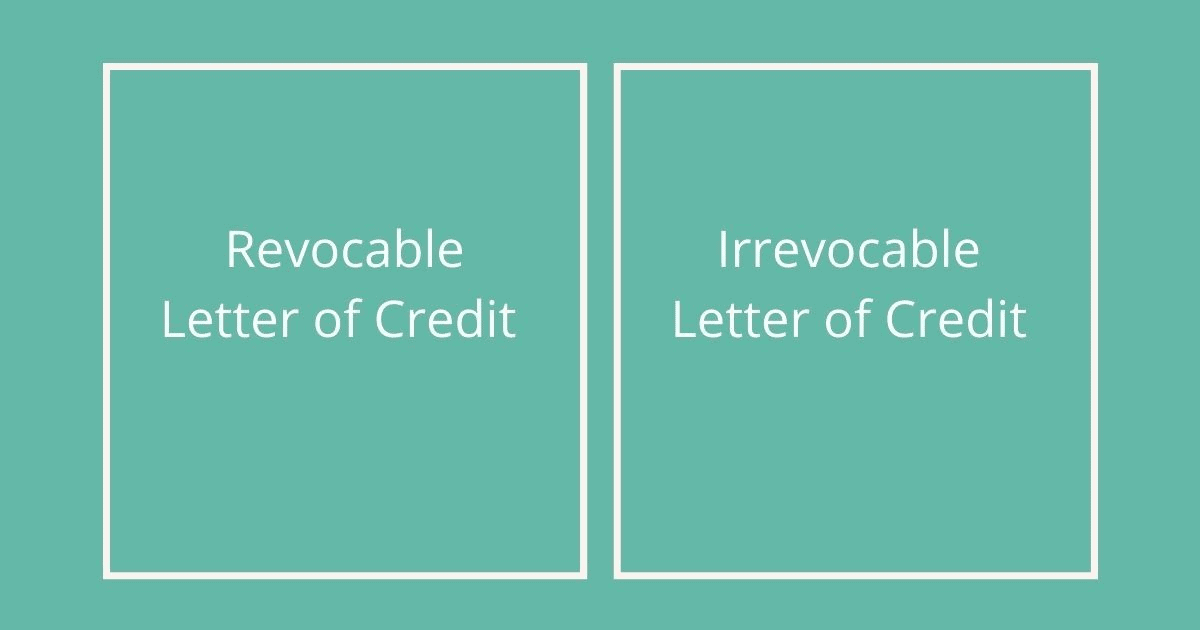- Home
Blog Blog
Export & Import Export & Import
Revocable vs. Irrevocable Letter of Credit: Understanding the Difference
Revocable vs. Irrevocable Letter of Credit: Understanding the Difference

What is a letter of credit?
A letter of credit is an undertaking by the issuing bank to guarantee a buyer’s payment to the seller, on-time. Through a letter of credit, the issuing bank takes the guarantee of repayment in full and in accordance with the pre-decided contract terms and conditions; in the unfortunate circumstance that the buyer is unable to fulfill its obligation, the onus falls on the bank to cover the balance or even full payment on behalf of the buyer.
This document is preferred especially for international trade as it defines and clarifies the intent and ability to pay; protecting vendors from risks involved and accelerating cross-border trade. There are various types of letters of credit, popularly referred to as documentary credit. The documentary credit fulfils the buyer’s desire for credit and satisfies the seller’s desire for cash, making it one of the most preferred payment contracts for international trade.

Understanding the Difference between a Revocable Letter of Credit and an Irrevocable Letter of Credit
1. Revocation
As the name suggests the primary difference between a revocable letter of credit and an irrevocable letter of credit is the ability to revoke. A Revocable letter of credit can be edited or annulled without prior notice to the receiver/ sellers.
On the other hand, an irrevocable letter of credit cannot be amended in any way or be cancelled unless explicitly agreed upon by all the parties involved in the agreement. The buyer, the issuing bank, and the seller need to explicitly decide the terms of revocation and agree upon them; no party has the authority to change any terms of the irrevocable letter of credit once it is issued.
2. Limited Security to the Beneficiary
A revocable letter of credit does not require prior consent before making any amendment or declaring it void, putting the exporter at risk most times. The exporter/ seller/ beneficiary feels much more secure using an irrevocable letter of credit as there is a guarantee that the payment will be received once the services are rendered/ goods are delivered. They are secure knowing that the bills drawn will be honored by the issuing bank after the conditions of the letter of the credit agreement are fulfilled by both parties
3. Frequency of Usage in International Trade
A revocable letter of credit is less frequently used and not as common as an irrevocable letter of credit for international trade. This is because it doesn’t guarantee complete assurance to the beneficiary as the issuing bank does not take absolute undertaking, putting the sellers at a disadvantage.
A revocable letter of credit is not only disadvantageous to the seller but can also risk the buyer – for instance if a seller was unable to ship goods as per the timeframe in the contract, under a revocable letter of credit, he could just amend the shipment date to whatever he deems fit. That may not be suitable for the buyer, but he would have no option but to accept it, rendering him powerless. However, if the same situation arose under an irrevocable letter of credit, he would have to get the consent of the buyer to have the letter of credit extended; giving the buyer the right to refuse if it didn’t meet his supply chain requirements.
Unless otherwise mentioned in the letter of credit, the default issue is an irrevocable letter of credit. If the issuing bank, buyer, or seller wants a revocable letter of credit, the contract needs to state that explicitly. The main purpose of a letter of credit is to offer some assurance to the parties involved and because a revocable letter of credit fails to do so, it is not a chosen method of payment. An irrevocable letter of credit is more secure and transparent, making it a preferred mode of payment for cross-border trade.
Another viable and cost-effective alternative to the letter of credit is Escrow payment services provided by Omoney, which protects both the buyer and seller in a transaction. The buyer and seller settle on transaction terms and the money will only be released once these terms are met.
Category

Export & Import
Revocable vs. Irrevocable Letter of Credit: Understanding the Difference
Related Articles

Why Do B2B Businesses Need Escrow Services

Problems Escrow Is Intended to Solve






